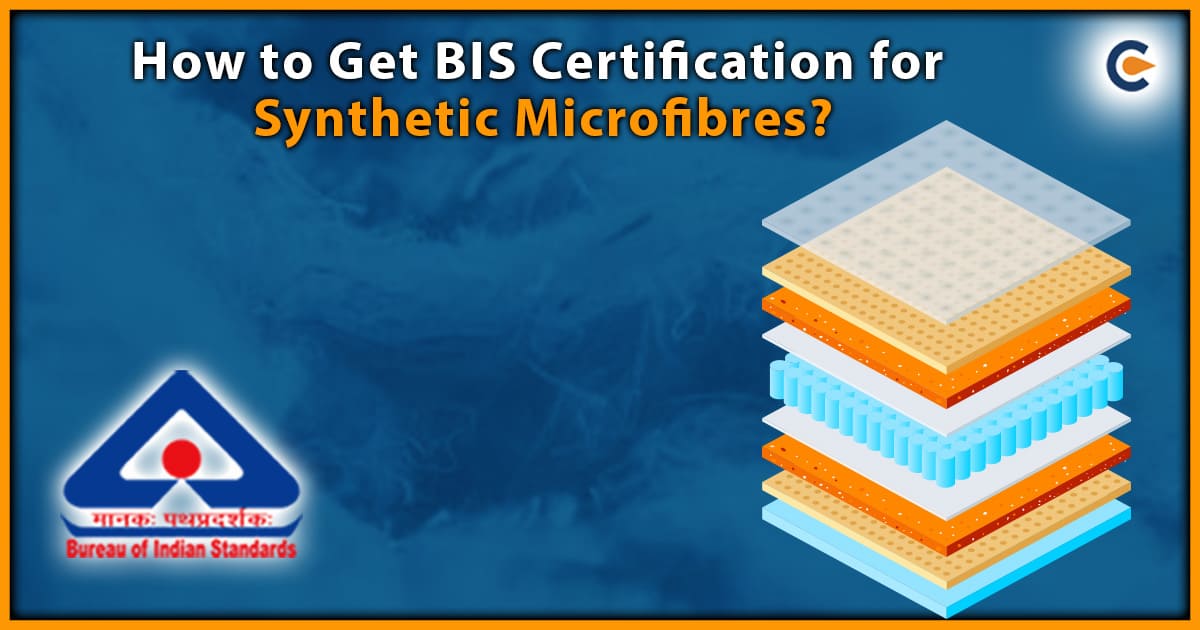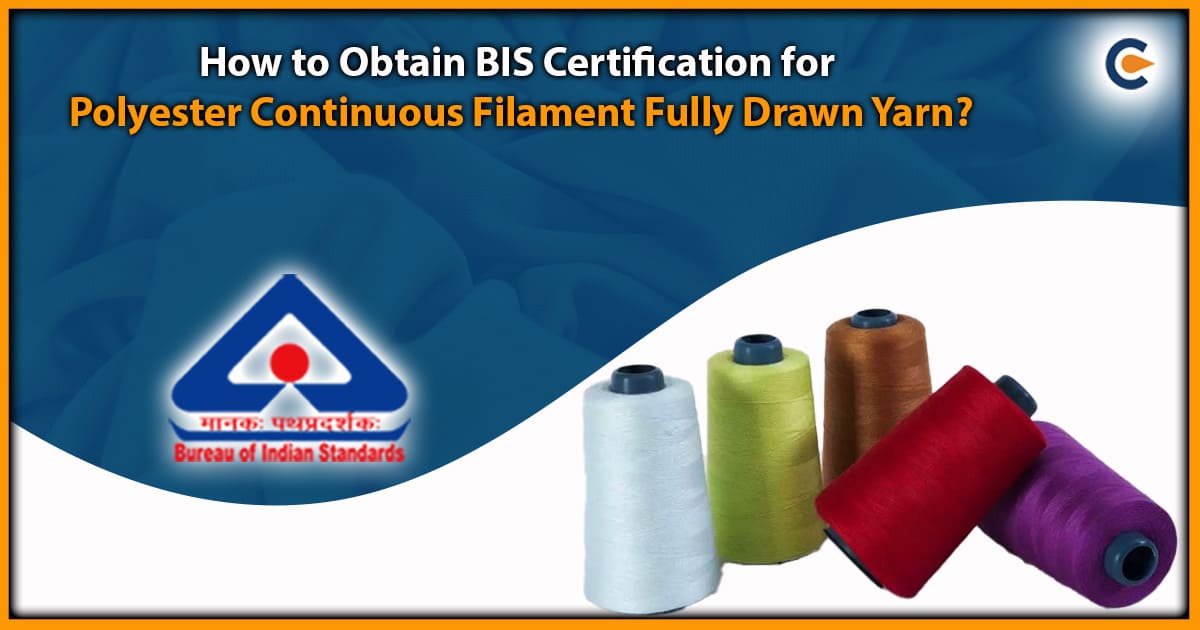Synthetic microfiber is a material that consists of fine synthetic fibers made from polyester, nylon, or rayon. It is widely used in sectors like textiles, automotive, medical, and cleaning. In the textile industry, synthetic microfiber is vastly used to create clothing and drapers. In the automotive sector, it is increasingly used in enhancing the visual appeal of car interiors. In the medical field, it is used to produce drapes and gowns. The cleaning industry uses synthetic microfiber for manufacturing cleaning cloths and mops. The increasing demand for synthetic microfiber can be attributed to its desirable characteristics such as softness, durability, and moisture-wicking properties. Moreover, it is more cost-effective compared to natural fibers like cotton or silk. Let’s explore the legalities around the BIS Certification for Synthetic Microfibres in detail.
Underlining the Role of IS 16481:2022
IS 16481:2022 is an Indian standard that specifies the physical, application, and functional requirements for synthetic microfibers like polyester, nylon, and polypropylene fibers.
The standard is used for secondary reinforcement in construction works such as concrete roads, pavements, industrial and commercial floorings, residential and commercial buildings, bridges, elevated structures, water retaining structures and dams, ports, undersea concrete structures, plaster, shotcrete, etc.
This standard primarily addresses the requirements for synthetic fibers used for secondary reinforcement of concrete, such as polyester, polypropylene, and nylon.
The synthetic fibers used for secondary reinforcement in concrete must meet the requirements specified in clause 4 of this standard, as well as the physical, application, and functional requirements specified in the standard.
Only virgin synthetic fibers with cut lengths ranging from 6mm to 25mm may be used as secondary reinforcement in cement-based matrices. No recycled material is permitted.
Fibers must be well dispersed in a cement-based matrix to achieve uniform functional properties. The Bureau of Indian Standards adopted this Indian standard after the textile division council approved the draft finalized by the technical textiles for Build tech sectional committee.
Test to qualify for BIS Certification for Synthetic Microfibres
The following test shall be carried out in accordance with the method prescribed.
- Water absorptive capacity test
- Resistance of fibers test
- Melting and glass transition temperature test
- Specific gravity test
- Viscosity test
- Isophthalic acid content test
Packing and labelling norms around BIS certification
To comply with IS 16481:2022, packing and marking must be done according to the standard. The bag or paper pouches must be marked with the information specified in the standard.
If the product(s) meet the requirements of this standard, they may be certified under the provisions of the Bureau of Indian Standards Act, 2016, and the Rules and Regulations framed thereunder.
The products may be marked with the Standard Mark (ISI Mark). To use a standard mark (ISI Mark), the manufacturer must obtain a BIS license from the Bureau of Indian Standards. The BIS[1] grants a license based on a successful assessment of manufacturing infrastructure, quality control, testing capabilities, and production process.
Paperwork concerning BIS Certification for Synthetic Microfibres
To secure BIS Certification for Synthetic Microfibres in India, you may need to arrange the following paperwork:
- Application form: A completed application form is required to start the certification process.
- Product specifications: Detailed specs of the synthetic microfibers, reflecting composition, physical properties, & intended use.
- Manufacturing process details: Detailed info concerning the manufacturing process relating to synthetic microfibers.
- Test reports: Test reports from an accredited lab reflect that the synthetic microfibers meet the underlying Indian Standards.
- Quality control plan: A quality control plan depicting how the manufacturer ensures that the product adheres to the underlying quality norms.
- Factory layout plan: A factory layout plan reflecting the location of the production premise, storage areas, as well as quality control facilities.
- Process flow chart: A process flow chart showing the various steps involved in the manufacturing process.
- List of equipment: A list of equipment utilized in the production process, along with calibration certificates.
- Personnel details: Details of manpower liable for quality control, testing, and production.
- Other dossiers: Any other paperwork required by the BIS for certification purposes.
It is vital to ensure that all paperwork is legit, complete, and up-to-date before submitting it to the authority for certification.
How to secure BIS Certification for Synthetic Microfibres?
BIS certification is a critical process for ensuring the quality, and reliability of products in India. To secure BIS certification for synthetic microfibers, the following steps must be followed:
- Determine the relevant Indian Standard:
Pinpoint the relevant Indian Standard that applies to synthetic microfibers. This standard pens down these fibers’ specs, performance requirements, and testing methods.
- Prepare the application:
Arrange all necessary paperwork for the registration process, such as product specs, production process details, test reports, and any information required by the BIS.
- Submit the application:
Furnish the completed application and documents to the nearest BIS branch office or via the online portal. Ensure accuracy & completeness of all information.
- Sample testing:
The BIS may select samples of synthetic microfibers from your production or request you to submit samples for testing. These samples undergo various tests according to the relevant Indian Standards to assess compliance with specified requirements.
- Factory inspection:
The BIS may perform a premise inspection where production takes place to verify adherence to required norms. This inspection aims to ensure that your production consistently yields products that adhere to the specified quality norms.
- Evaluation of test reports:
Following sample testing and factory inspection, the BIS evaluates the test reports and inspection findings to determine compliance of the synthetic microfibers with the applicable Indian Standard.
- Grant of BIS certification:
If the synthetic microfibers pass all necessary tests, inspections, and evaluations, the BIS grants BIS certification. You will receive a certificate and a unique BIS registration number.
- Surveillance and renewal:
After obtaining BIS certification, you must undergo periodic surveillance audits and renew your certification at regular intervals. This ensures ongoing adherence to the standards over time.
Note: Please note that the specific requirements & detailed process may vary depending on the product’s nature & the Indian Standard applicable to the product. For the most accurate information, feel free to consult Corpbiz’s professionals.
Conclusion
To ensure the quality and reliability of synthetic microfiber products in India, BIS certification is necessary. The BIS grants certification if the synthetic microfibers meet the specified quality requirements. It is crucial to ensure that all documentation is accurate, complete, and up-to-date before submitting it for certification. Seeking professional guidance can be beneficial in navigating the BIS certification process.
Read Our Article: How To Get BIS Certification For Polyester Staple Fibers?













